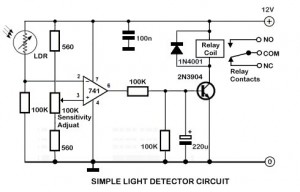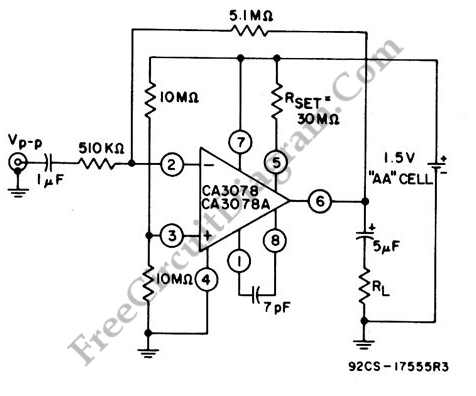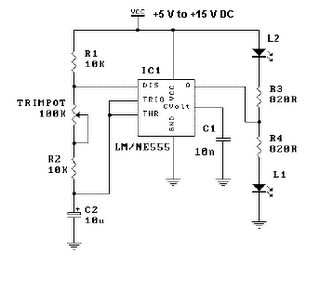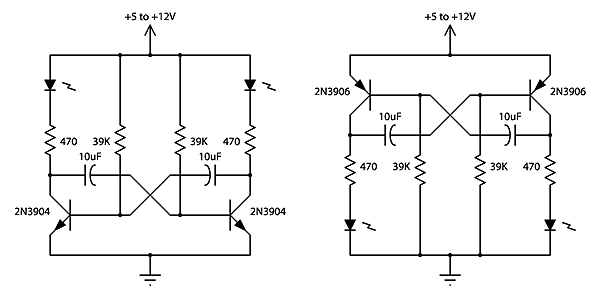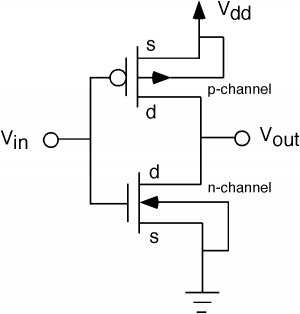
TV Signal Amplifier circuit With BFR90 Transistor
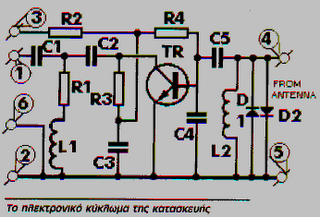
These frequencies include TV in VHF and UHF, as well as the radio broadcasting frequencies in the 88 - 108 MHz FM band. Component: Resistor, IC.
The circuit described operates within the VHF (Very High Frequency) and UHF (Ultra High Frequency) bands, which are commonly used for television broadcasting, as well as the FM (Frequency Modulation) radio band from 88 to 108 MHz. This range is crucial for both analog and digital broadcasting systems.
The components mentioned, such as resistors and integrated circuits (ICs), play essential roles in the performance of the circuit. Resistors are used to control current flow and voltage levels within the circuit, ensuring that the signal remains within operational limits. They can also be utilized for biasing transistors or for creating voltage dividers, which are fundamental in tuning and signal processing applications.
Integrated circuits, on the other hand, can serve multiple functions, including amplification, modulation, and demodulation of the signals. For instance, an IC designed for radio frequency applications may include amplifiers to enhance weak signals received from antennas, filters to eliminate unwanted frequencies, and demodulators to convert the received FM signals back into audio.
In practical applications, the circuit may incorporate additional components like capacitors and inductors to form tuned circuits, which are essential for selecting specific frequencies. These tuned circuits can be adjusted to resonate at the desired frequency, thereby allowing the circuit to filter and process signals effectively.
Overall, the design and implementation of circuits operating in these frequency ranges require careful consideration of component selection and configuration to ensure optimal performance in receiving and processing television and radio signals.These frequencies include TV in VHF and UHF and also the radio broadcasting frequencies in the 88 - 108 MHz FM band.. Component: Resistor, IC, .. 🔗 External reference
The circuit described operates within the VHF (Very High Frequency) and UHF (Ultra High Frequency) bands, which are commonly used for television broadcasting, as well as the FM (Frequency Modulation) radio band from 88 to 108 MHz. This range is crucial for both analog and digital broadcasting systems.
The components mentioned, such as resistors and integrated circuits (ICs), play essential roles in the performance of the circuit. Resistors are used to control current flow and voltage levels within the circuit, ensuring that the signal remains within operational limits. They can also be utilized for biasing transistors or for creating voltage dividers, which are fundamental in tuning and signal processing applications.
Integrated circuits, on the other hand, can serve multiple functions, including amplification, modulation, and demodulation of the signals. For instance, an IC designed for radio frequency applications may include amplifiers to enhance weak signals received from antennas, filters to eliminate unwanted frequencies, and demodulators to convert the received FM signals back into audio.
In practical applications, the circuit may incorporate additional components like capacitors and inductors to form tuned circuits, which are essential for selecting specific frequencies. These tuned circuits can be adjusted to resonate at the desired frequency, thereby allowing the circuit to filter and process signals effectively.
Overall, the design and implementation of circuits operating in these frequency ranges require careful consideration of component selection and configuration to ensure optimal performance in receiving and processing television and radio signals.These frequencies include TV in VHF and UHF and also the radio broadcasting frequencies in the 88 - 108 MHz FM band.. Component: Resistor, IC, .. 🔗 External reference
